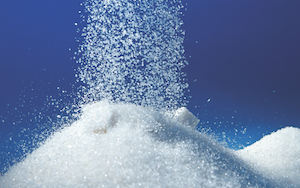Very few drinks categories boast the inherent qualities of the vast pantheon that is the liqueurs market. Put simply, there is a liqueur brand to suit all tastes, appeal across all age groups and, what’s more, the action is constantly evolving in order to meet the ever-changing consumer demand. All of which makes for a hugely fragmented and highly complicated sector.
There are traditional liqueur brands, such as Drambuie and the coffee lines Kahlua and Tia Maria, along with the cassis and fruit liqueur brands like Gabriel Boudier and Merlet. Then there are the diverse ranges of De Kuyper, Bols and Wenneker. The list goes on and on, until you come to the new age liqueur types like Malibu. Interestingly though, considering the staggering diversity, the one common denominator is the ongoing importance of the cocktail, which means the US and UK are the crucial hubs for liqueur-mongers.
In fact, liqueurs have been delivering flavour and sweetness to mixed drinks throughout cocktail history. In the US there is a further trend towards sweetness in general. Every flavour/brand of liqueur has different sweetness levels depending on the intensity of the flavour or blend. Consumers are looking for new experiences and flavours, either from a brand or a skilled mixologist.
Defining the sector
“Generally it is difficult to put your finger on liqueurs, and there is a definitional problem with Malibu – which we see as a Caribbean rum and coconut drink,” says Paul Duffy, brand owner Absolut’s chairman and CEO. “Consumers are not buying Malibu or, for that matter Kahlua, which is more of a classic, because they are liqueurs – they’re buying the brand.”
As such innovation is central to Malibu’s strategy in order to keep the brand relevant. In March the company launched updated packaging for Malibu and recent launches, geared to extend the brand’s franchise, have included Malibu Rum Island Spiced, described as a “blend of Caribbean rum and coconut liqueur with light spices, smoked vanilla, cinnamon and a touch of natural sweetness with Truvia, zero-calorie sweetener”.
The result is a lower-calorie, “full-flavoured spiced rum alternative” which is ideal for its prime consumer. “Malibu’s consumers start at legal drinking age and go into the late 20s and it is more skewed to females,” says Duffy. “Malibu is all about the summer state of mind, fun and the barbecue. Most recently we have launched two dessert-flavoured line extensions – Malibu Sundae and Malibu Swirl.” Sundae combines coconut with chocolate ice cream flavour and Swirl has a strawberries and cream flavour. “It’s all conceptual, and meant to be fun,” says Duffy. “Most of the US is a take-home market, so choice and convenience are important.”
Not surprisingly then, its range of Malibu premix cocktails in pouches has gone down a treat Stateside and has recently been extended to include Blue Hawaiian and Pina Colada Light. In addition, a three strong-range of Malibu premixes, pineapple, cranberry and cola has been unveiled in cans.




